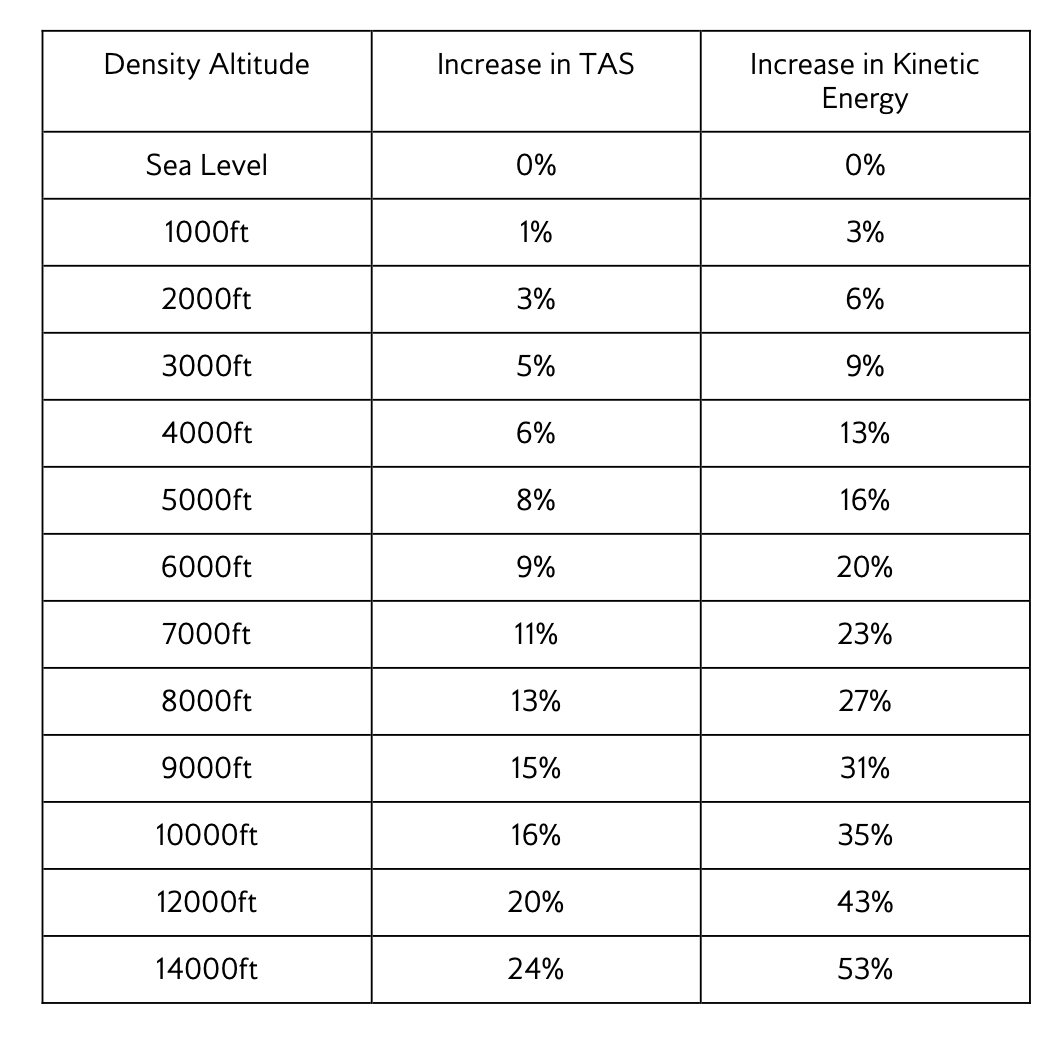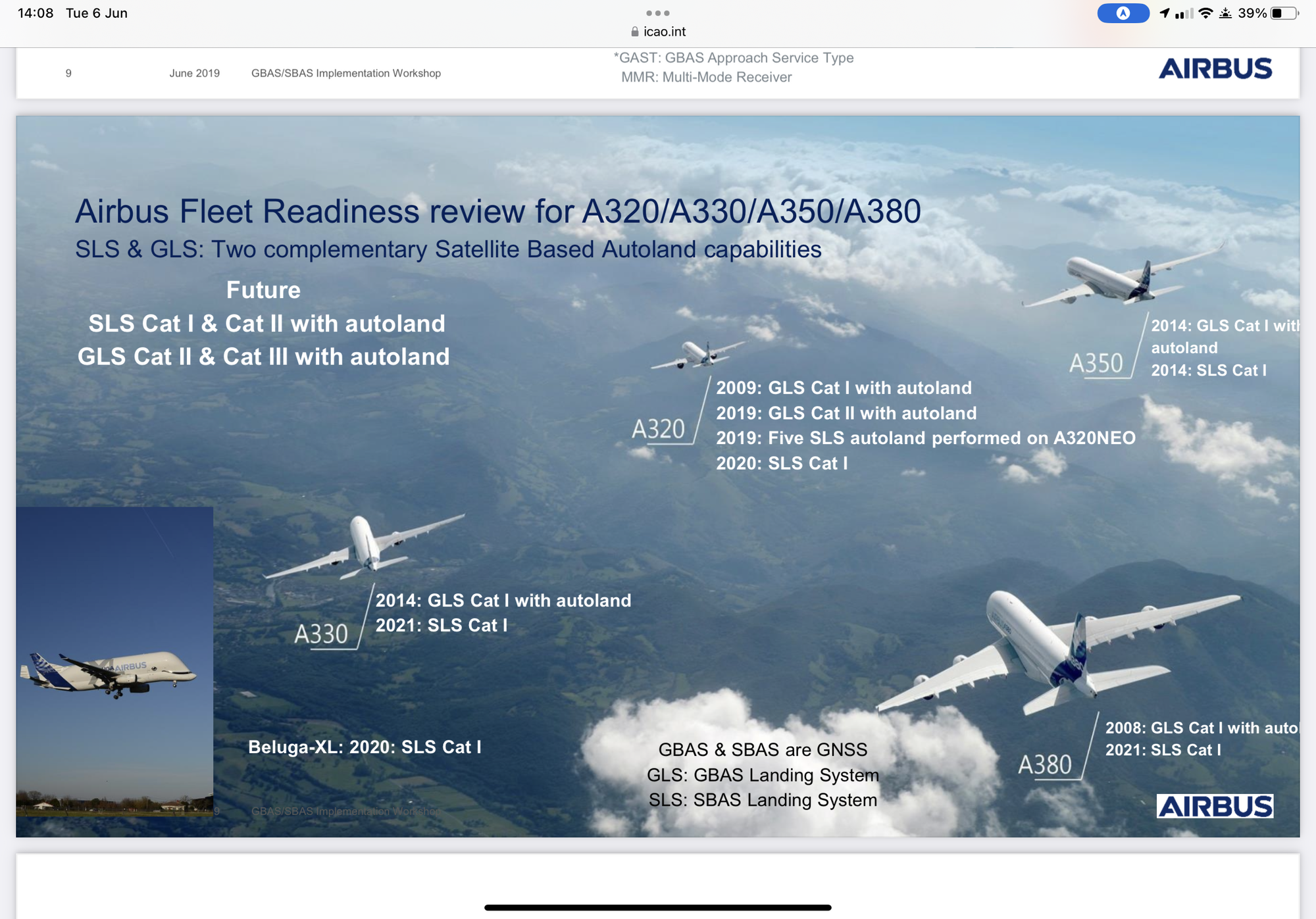Ask the staffer
#1067
Ambassador, British Airways Executive Club
Join Date: Feb 2008
Location: UK
Posts: 10,162
One for the Pilots here if I may please?
I'm a sucker for airline geeky videos and watching a BA 789 taking off from Mexico, the author stated that as MEX is 7,000 feet above sea level which results on a much higher high take off/rotation speed due to the thinner air? I didn't know this and wondering how this is calculated? Is it x amount of knots for every 1k/5k elevation?
Secondly, are there other airports like this BA fly to?
TIA
Pete
I'm a sucker for airline geeky videos and watching a BA 789 taking off from Mexico, the author stated that as MEX is 7,000 feet above sea level which results on a much higher high take off/rotation speed due to the thinner air? I didn't know this and wondering how this is calculated? Is it x amount of knots for every 1k/5k elevation?
Secondly, are there other airports like this BA fly to?
TIA
Pete
#1068
Join Date: Dec 2012
Posts: 3,215
One for the Pilots here if I may please?
I'm a sucker for airline geeky videos and watching a BA 789 taking off from Mexico, the author stated that as MEX is 7,000 feet above sea level which results on a much higher high take off/rotation speed due to the thinner air? I didn't know this and wondering how this is calculated? Is it x amount of knots for every 1k/5k elevation?
Secondly, are there other airports like this BA fly to?
TIA
Pete
I'm a sucker for airline geeky videos and watching a BA 789 taking off from Mexico, the author stated that as MEX is 7,000 feet above sea level which results on a much higher high take off/rotation speed due to the thinner air? I didn't know this and wondering how this is calculated? Is it x amount of knots for every 1k/5k elevation?
Secondly, are there other airports like this BA fly to?
TIA
Pete
As a rule of thumb, Density Altitude = Airfield Pressure Altitude + 1000ft per 8°C above ISA
ISA is 15°C at sea level with an air pressure of 1013 hPA. Pressure Altitude is the altitude we see in the altimeter when the pressure sub scale is set to 1013mb (hPA).
ISA assumes a temp fall of 2°C per 1000ft, so MEX at 7316ft ASL should only ever be 1°C in an ISA world. Today as I edit this reply it is 28 C and a QNH of 3019 inhg or 1022. 1mb = circa 30ft pressure alt. So the density of MEX at 1930 UTC today is just shy of 11,000ft above sea level.
The higher we go, the thinner the air (the same with rising temp, so at MEX a double whammy) and to have an airspeed the wings ‘feel’ of say 150 knots, we may well be at 160 knots in reality.
The likes of NBO ADD DEN are all very similar in this respect. The lower density of molecules of air mean the wings and engines are doing less work with what is available to them, hence the extra speed to compensate.
The other side to the author’s explanation is linked to the above but something to do with ‘improved climb’ performance. Strictly speaking, Boeing OPT (the programme we use on the 787 to run our take off and landing figures) will always seek to use ‘improved climb’ as standard. The reason for this is due to something known as ‘net take off performance’ and the obstacles that tend to limit the 2nd and 4th segments of the above.
Improved climb seeks to utilise the excess runway available to generate extra speed and thus energy prior to lift off, this equates ultimately to a higher weight we can take off with, more fuel/pax/bags/post/freight or combo of the above, and/or a higher reduction of thrust used on take-off = less engine wear = lower costs in our engine rental agreement with Rolls Royce.

(TAS = true airspeed, which is higher than IAS = indicated air speed, which typical traditional aircraft instruments display. The 787 is different in this respect, but that’s a whole other chapter)
TAS is higher than IAS at hot and high airfields.
Last edited by Sigwx; Jun 4, 2023 at 1:35 pm
#1071
Join Date: Aug 2008
Posts: 2,067
Adding to Sigwx’s excellent answer
Hot temperatures also have an effect on the aircraft’s altitude - this works both in cold weather and hot temperature. Air density is, as Sigwx detailed, dependent upon temperature. In cold weather a normal altimeter will under-read as they are all calibrated for ISA sea level conditions and the actual air is colder and therefore more dense. In reality unless it is very cold (we start to get interested at ISA -15) we can largely ignore this, but when it is cold there is a correction added to our Decision Alt. So for a standard Cat 1 ILS approach a normal DA would be 200ft for a sea level airfield. At ISA -15 we would add about 20feet to the DA and use 220feet to take into account the lower density altitude.
The opposite effect in the summer can be quite noticeable - so on the approach into Alicante in the summer with a temp of 35C or ISA +20 we would not lower the DA, but a glide slope check alt at 5500ft could easily show as 5900ft on the altimeter. With any approach where there is a physical glide slope beam like an ILS this is not really important as you can predict it and make an allowance - the actual slope of the approach does not change. Should the approach be one without a physical beam rather a glide slope predicated on distance (such as a VOR or ADF, or some of the RNAV type approaches) then that glide slope becomes steeper, and hence a little more tricky to fly.
Interestingly the A350 can fly an approach based on Satellite derived position AND height, which makes the temperature issue on the approach far less important and it is hoped that this type of approach will soon be certified for Low Vis Ops, just like the ILS with its physical beams.
Hot temperatures also have an effect on the aircraft’s altitude - this works both in cold weather and hot temperature. Air density is, as Sigwx detailed, dependent upon temperature. In cold weather a normal altimeter will under-read as they are all calibrated for ISA sea level conditions and the actual air is colder and therefore more dense. In reality unless it is very cold (we start to get interested at ISA -15) we can largely ignore this, but when it is cold there is a correction added to our Decision Alt. So for a standard Cat 1 ILS approach a normal DA would be 200ft for a sea level airfield. At ISA -15 we would add about 20feet to the DA and use 220feet to take into account the lower density altitude.
The opposite effect in the summer can be quite noticeable - so on the approach into Alicante in the summer with a temp of 35C or ISA +20 we would not lower the DA, but a glide slope check alt at 5500ft could easily show as 5900ft on the altimeter. With any approach where there is a physical glide slope beam like an ILS this is not really important as you can predict it and make an allowance - the actual slope of the approach does not change. Should the approach be one without a physical beam rather a glide slope predicated on distance (such as a VOR or ADF, or some of the RNAV type approaches) then that glide slope becomes steeper, and hence a little more tricky to fly.
Interestingly the A350 can fly an approach based on Satellite derived position AND height, which makes the temperature issue on the approach far less important and it is hoped that this type of approach will soon be certified for Low Vis Ops, just like the ILS with its physical beams.
Last edited by Waterhorse; Jun 4, 2023 at 2:26 pm
#1072
Join Date: Nov 2011
Location: LHR Air Traffic Control
Programs: BAEC Silver
Posts: 876
#1073
Join Date: Aug 2008
Posts: 2,067
#1075
Join Date: Aug 2008
Posts: 2,067
No, it’s an onboard system. The issue of LV OPS is another matter, there is no LSSA as there is no “beam” to be interfered with but I suspect that most of the other safeguards would need to be kept. The potential is that it can allow lower DA ops without extensive ground installations and redundancies.
#1076
Join Date: Nov 2011
Location: LHR Air Traffic Control
Programs: BAEC Silver
Posts: 876
Waterhorse Thanks, that does surprise me somewhat. I'm not aware of any work going on at the moment on SBAS lower than LPV-200/CAT I minima. Even the Dual Freq. Multi-Constellation SBAS SARPS aimed only at CAT I, and they were approved in Nov 2020 by the ICAO Nav Systems Panel, and will hopefully be incorporated by State Letter later this year.
Avionics built to those SARPs should be coming on line in around 2027.
Frankfurt have just got their GBAS/GLS GAST-C running to CAT II last year, and All-Weather Ops/LVO world is all looking to GAST-D GBAS for CAT III.
Avionics built to those SARPs should be coming on line in around 2027.
Frankfurt have just got their GBAS/GLS GAST-C running to CAT II last year, and All-Weather Ops/LVO world is all looking to GAST-D GBAS for CAT III.
#1077
Join Date: Aug 2008
Posts: 2,067
Waterhorse Thanks, that does surprise me somewhat. I'm not aware of any work going on at the moment on SBAS lower than LPV-200/CAT I minima. Even the Dual Freq. Multi-Constellation SBAS SARPS aimed only at CAT I, and they were approved in Nov 2020 by the ICAO Nav Systems Panel, and will hopefully be incorporated by State Letter later this year.
Avionics built to those SARPs should be coming on line in around 2027.
Frankfurt have just got their GBAS/GLS GAST-C running to CAT II last year, and All-Weather Ops/LVO world is all looking to GAST-D GBAS for CAT III.
Avionics built to those SARPs should be coming on line in around 2027.
Frankfurt have just got their GBAS/GLS GAST-C running to CAT II last year, and All-Weather Ops/LVO world is all looking to GAST-D GBAS for CAT III.

#1078
Join Date: Nov 2011
Location: LHR Air Traffic Control
Programs: BAEC Silver
Posts: 876
It is a great tool no doubt. DSNA in France went full-on ripping out CAT I and uncategorised ILS all over the place where they could publish LPV200 approaches.
My experience with Airbus at meetings like this is that it can veer towards marketing. From what I've seen attending various working groups and workshops there's not even any discussion about it (I think those slides are from the 2019 GSIW in Soeul....certainly recognise them! I was a 'virtual' attendee as I couldn't get anyone to pay for my travel(!) Bit annoying having to sit there at home waiting for a webex to start at 2am).
GBAS CAT II/III SARPS were agreed back in 2010, and we're only now seeing operational CAT II approaches... CAT III still a few years away. I'm very sceptical on SBAS being used for anything other than CAT I (perhaps LTS CAT I and OTS CAT II). Will 'virtually' collar someone from Airbus soon (next International GBAS Working Group is coming up in San Franciscoin a few weeks).
My experience with Airbus at meetings like this is that it can veer towards marketing. From what I've seen attending various working groups and workshops there's not even any discussion about it (I think those slides are from the 2019 GSIW in Soeul....certainly recognise them! I was a 'virtual' attendee as I couldn't get anyone to pay for my travel(!) Bit annoying having to sit there at home waiting for a webex to start at 2am).
GBAS CAT II/III SARPS were agreed back in 2010, and we're only now seeing operational CAT II approaches... CAT III still a few years away. I'm very sceptical on SBAS being used for anything other than CAT I (perhaps LTS CAT I and OTS CAT II). Will 'virtually' collar someone from Airbus soon (next International GBAS Working Group is coming up in San Franciscoin a few weeks).
#1079
Join Date: Oct 2022
Location: Scotland
Programs: BA Gold, ALL, IHG, Hilton H
Posts: 101
Does the altitude a plane flies at affect the safe operation of the air conditioning system?
Just returned from Turkey, plane had some form of technical issue with its air con system, which engineers sorted. However the flight back was at 25,000 ft all the way rather than the 35-38,000 ft that normally applies. Captain said, although air con was fixed, it was ‘safer’ for them to be flying at the lower altitude.
If an air con system malfunctions en route, does this mean passengers would experience freezing or hot conditions in the cabin?
Just returned from Turkey, plane had some form of technical issue with its air con system, which engineers sorted. However the flight back was at 25,000 ft all the way rather than the 35-38,000 ft that normally applies. Captain said, although air con was fixed, it was ‘safer’ for them to be flying at the lower altitude.
If an air con system malfunctions en route, does this mean passengers would experience freezing or hot conditions in the cabin?
#1080
Join Date: Dec 2012
Posts: 3,215
Does the altitude a plane flies at affect the safe operation of the air conditioning system?
Just returned from Turkey, plane had some form of technical issue with its air con system, which engineers sorted. However the flight back was at 25,000 ft all the way rather than the 35-38,000 ft that normally applies. Captain said, although air con was fixed, it was ‘safer’ for them to be flying at the lower altitude.
If an air con system malfunctions en route, does this mean passengers would experience freezing or hot conditions in the cabin?
Just returned from Turkey, plane had some form of technical issue with its air con system, which engineers sorted. However the flight back was at 25,000 ft all the way rather than the 35-38,000 ft that normally applies. Captain said, although air con was fixed, it was ‘safer’ for them to be flying at the lower altitude.
If an air con system malfunctions en route, does this mean passengers would experience freezing or hot conditions in the cabin?
For some short haul aircraft the loss of a pack which conditions and supplies the air to the cabin via the mix manifold, the altitude will be limited to around the 25,000ft mark to ensure sufficient mass flow. The failure of a pack in flight whilst at altitude does not in itself cause any issues with pressurisation or temperature control.
Temperature control issues tend to be the result of ‘zone controller’ and ‘trim air’ valve issues.
Wider bodied aircraft and newer short haul types generally don’t have altitude limits when dispatching with one pack unserviceable, but it is type dependant.





















